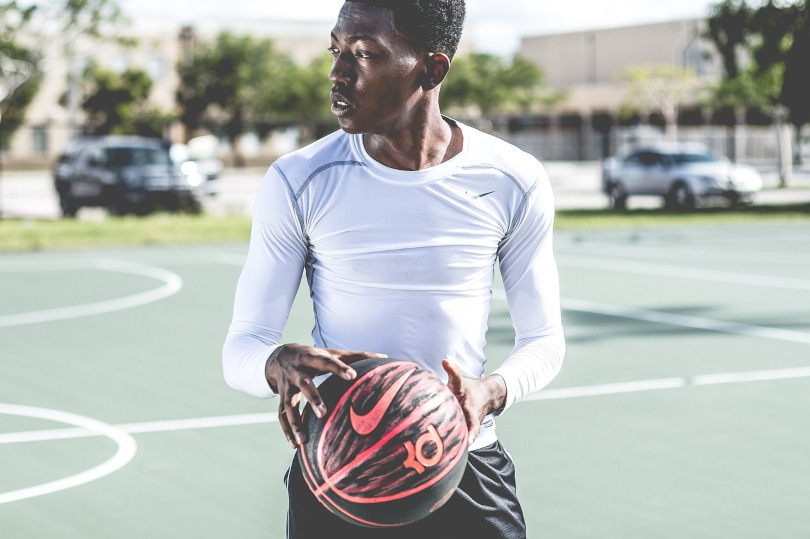Activism in the twenty-first century is unlike the activism of any previous era. Its most unique characteristic, of course, is the use of technology and social media to accomplish its goals. Surely, the Bolsheviks and Jacobins would’ve liked to have Instagram Live, but alas, thanks to social media, Internet search engines, and text messaging, the act of being a revolutionary has itself been revolutionized. Activists and organizers can promote their causes, find nearby rallies and protests, and consume information about present affairs with never-before-seen efficiency. The scale of the protests following the 2020 murder of George Floyd was largely due to the incident being recorded on smartphones and shared on social media.
Corporate Commotion
Another characteristic of twenty-first-century activism is a possible byproduct of technology’s influence. It’s very common today for brands and other commercial organizations, such as sports leagues, to openly support causes. Research shows that consumers’ purchasing patterns are affected by what is known as “brand activism.” When a brand takes a stand, consumers notice and are either positively or negatively swayed by the nature of the brand’s activism. These stands and public reactions to them often take place on the Internet and social media, which establishes a mutually reinforcing relationship between brand and digital activism. Ice cream company Ben & Jerry’s, for example, regularly practices digital brand activism by promoting progressive causes on their website and social media accounts.
Recent examples clearly demonstrate the relationship between brand activism and consumer behavior. When Anheuser-Busch’s leading beer brand Bud Light partnered with trans TikTok influencer and actress Dylan Mulvaney, catastrophe struck. The Bud-drinking members of the American right instantly (and violently) boycotted the brand, accusing Anheuser-Busch of pandering to “woke” interests. The

boycott caused Bud Light to drop out of America’s top ten favorite beers and cost Anheuser-Busch over twenty billion dollars in market value. The conservative public also boycotted Target in response to their LGBTQ+ Pride collection. Although Mulvaney herself questioned whether Bud Light’s decision to partner with her constituted activism, as they failed to support her during the backlash, critics and boycotters agreed that the partnership was a gratuitous political statement.
While the Internet may have accelerated the pace and widened the scope of the backlash, the backlash itself predates the digital age. There’s nothing new about public outrage in reaction to corporate decisions. Even in the case of American conservative outrage directed toward allegedly liberal business decisions there is precedent. A similar occurrence to today’s Bud Light controversy took place following the Brown v. Board of Education decision in 1954. Believing Ford Motor Company and tobacco giant Philip Morris to be pro-integration, segregationists boycotted both companies. They also protested and boycotted companies responsible for television shows with interracial casts. Then, as now, the right felt the country had gone soft and that they were the last bastion of common sense.
Sporting Sanctions
Athletes, of course, have dealt in activism for decades, but so have the organizations for which they compete. A strong example of both brand and sporting activism is found in the more than one thousand bans and sanctions being leveled against Russia and Belarus for their involvement in the Russo-Ukrainian War. In addition to the exits of high-profile companies like Nike, Starbucks, McDonald’s, and General Motors, Russia is also being ostracized by several major sports governing bodies. The governing bodies of international and European soccer, FIFA and UEFA respectively, suspended Russian clubs from all competitions. The International Tennis Federation banned Russia and Belarus from all international team competitions. The Olympics and Paralympics—as well as the leading international rugby, basketball, and hockey organizations—have all washed their hands of either Russian or Russian and Belarusian team participation. And they still don’t constitute the full list.
Once again, there is heavy precedent for activism of this kind. During the apartheid era of South Africa, the international sports world took a united stand similar to the one currently being taken against Russia. In 1958, South Africa was expelled from the Confederation of African Football, an organization that they had cofounded just the year before. Throughout the next three decades, South Africa would be suspended, banned, or sanctioned by the International Olympic Committee (IOC), FIFA, tennis’ Davis Cup, the World Boxing Council, and the International Association of Athletics Federations. Just as in the case of sanctions against Russia, this barely scratches the surface of the comprehensive list.
The IOC has a long—and because of the Russo-Ukrainian War, ongoing—history of excluding nations from the Olympics. The 1920 Antwerp games didn’t include World War I’s Central Powers of Austria, Hungary, Bulgaria, Germany, and the Ottoman Empire. The 1948 London Games left out Germany and Japan for their leadership in World War II’s Axis powers. South Africa was banned from the 1964 Tokyo Games through the 1988 Seoul Games. At the 1992 Barcelona games, Yugoslavia was banned from team events for their military aggression against Bosnia and Herzegovina and Croatia. The 2000 Sydney Games banned Taliban-governed Afghanistan for not allowing women to compete in sports. The legacy lives on with the exclusion of Russia and Belarus from next year’s team events in Paris.
Sports Speaks
Following the murder of George Floyd in Minneapolis, some American sports organizations usually began short-lived campaigns of antiracist activism. The 2020 NBA season, the year of the “bubble,” saw the league emblazon “Black Lives Matter” on the hardwood and allow players to wear antiracist messages on the backs of their jerseys in place of their names, such as “Equality,” “Say Their Names,” and “How Many More.” For multiple consecutive seasons, the NFL stenciled “It Takes All Of Us” and “End Racism” into fields’ end zones and allowed players to choose between six, then seven antiracist messages to put on the back of their helmets. The messages included “Black Lives Matter,” “Say Their Stories,” “Inspire Change,” and “Stop Hate.”
Also in 2020, NASCAR banned the Confederate flag—a symbol that many find reminiscent of the history of American slavery—from its events to many racing fans’ chagrin. NASCAR, the leading governing body of a sport adored by millions of Southern conservatives who

support the use of the flag, came under fire from waves of fans and even then-president Donald Trump for the decision.
During the opening week of the 2020 MLB season, the pitching mounds of Nationals Park in Washington, DC and Dodger Stadium in Los Angeles featured a boldly illustrated “BLM.” The initialism was also featured on the sides of the stadiums’ bases. The two games also featured a pregame display involving the players of all four teams kneeling around the diamond (despite later standing for the national anthem) and holding a long black ribbon in support of the Black Lives Matter movement.
From the business world to the sports world, commercial organizations are speaking up like they never have before. Regardless of whether they’re focused on driving profits or simply standing up for what they believe in, they’re getting their points across, and consumers are listening. Sometimes, the public reaction to such stands is positive. Sometimes it isn’t. Brands’ opinions, like ours, have always been and forever will be subject to eternal scrutiny. Being more vocal than ever necessitates being more careful than ever. Fortunately for us regular folk, our opinions rarely have the capacity to cost us billions of dollars.


